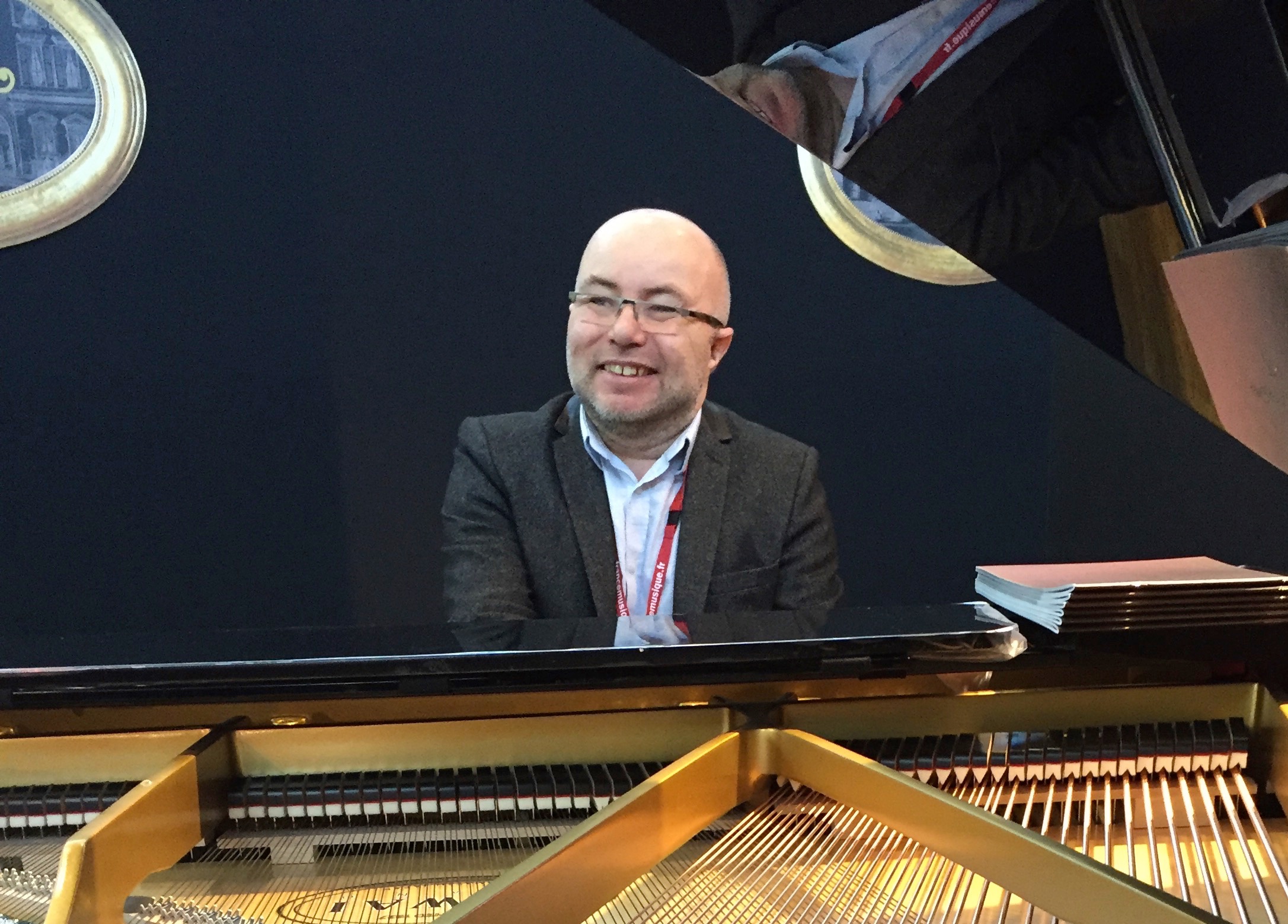-
Posts
1,059 -
Joined
-
Last visited
Content Type
Forums
Events
Store
Video Gallery
Posts posted by Stephane Boussuge
-
-
Hi folks,
I've made a new tutorial. With that tutorial you will get not only lessons but also the full generative Opusmodus algorithms to generate your own orchestral music !
What sets this course apart is its focus on designing orchestral templates. Rather than simply scratching the surface of Opusmodus, we will delve deep into the process of constructing templates that serve as the foundation for your orchestral compositions. With a strong emphasis on generative techniques, you will learn how to breathe life into your music by harnessing the creative potential of Opusmodus.
Course Highlights:
1. Designing and using the orchestral template.
Learn to design and utilise orchestral templates in Opusmodus
2. Pattern based generative example.
Explore pattern-based generative examples
3. Orchestral pitch remapping.
Master orchestral pitch remapping
4. Instrumentation / Orchestration.
Dive into instrumentation and orchestration techniques
5. Assembling sections.
Learn how to assemble sections effectively
6. Section designer: Full algorithm.
Use the Section Designer to create a full orchestral piece section by section
Here's the link:
 Courses - Composer Workshop
WWW.COMPOSERWORKSHOP.COM
Courses - Composer Workshop
WWW.COMPOSERWORKSHOP.COM -
You have to define them in user-attributes file in Extensions.
To get a full tutorial on the subject:
 Designing sound sets and instruments sets – Working with VI plugins with Opusmodus (level 2) - Composer Workshop
WWW.COMPOSERWORKSHOP.COM
Designing sound sets and instruments sets – Working with VI plugins with Opusmodus (level 2) - Composer Workshop
WWW.COMPOSERWORKSHOP.COM
<span>This level 2 course focuses on designing sound sets and working with VI plugins in Opusmodus. It is intended for users who already have some experience with Opusmodus and want to learn new techniques for driving virtual instruments plugins directly from Opusmodus, managing the playback, articulations and controllers to enhance their composition workflow and output sound...SB.
-
Hi Didier,
it is about the 2 new functions ffth and fftw, Janusz change the name of this two function just after release.
You probably never use them because the release of this 2 functions was Yesterday.
Best !
Stéphane
-
7 hours ago, david said:
did you use Sibelius?
Yes.
-
This is EastWest libraries.
S.
-
6 hours ago, erka said:
How would a tendency mask be different to this?
(progn (setf bw (gen-brownian-motion 128 :seed 425)) (setf env1 '(-5.1 -2.3 1.5 -0.8 4.6 10.6)) (setf env2 '(1.0 1.2 -1.1 2.1 -0.3 -2.5)) (list-plot (vector-to-envelope2 env1 env2 bw)) )
For me, I think that's perfect !
I know many of the OM functions but totally forgot about that one.
Thank you for the trick !
Best
S.
-
For further information about the concept of tendency masking, here's 2 links to Cmask implementation.
Something similar in OM would be nice.
 CMask Manual
ABARTETZKI.USERS.AK.TU-BERLIN.DE
CMask Manual
ABARTETZKI.USERS.AK.TU-BERLIN.DE CMask Article
ABARTETZKI.USERS.AK.TU-BERLIN.DE
CMask Article
ABARTETZKI.USERS.AK.TU-BERLIN.DE -
Hi,
the orchestration come from other files indeed. I'm working on the scripting of the videos actually.
Best
Stéphane
-
5 minutes ago, Cliff said:
Is it possible to span multiple consecutive melody notes (i.e half bar) and derive from them the chords?
You can use get-harmonic-path function.
S.
-
I'm in travel actually and very busy but i wrote two short example for you to explore, not exactly what you ask for but I hope interesting to study for you and hopefully inspiring for further exploration.
Happy study

;;; EXAMPLE 1 ;;; =================== (progn ; basic version (setf melo.pch (vector-to-pitch '(c4 e5) (gen-noise 64))) (setf melo.len (flatten (rnd-sample 64 '(h. h q (e e)(s s s s) -q)))) (setf melo (make-omn :pitch melo.pch :length melo.len )) (setf chords-types '((-4 -6 -9 -16)(-7 -9 -12 -15)(-2 -8 -12 -17))) (setf base-acc (gen-chord3 melo.pch chords-types :cycle nil :relative t)) (setf acc (chord-interval-replace '(1 2 3 4) '(-11 -10 -9 -8) (ambitus '(c3 g5) (length-legato (length-weight (make-omn :pitch base-acc :length melo.len )))))) (ps 'gm :vn* (list melo) :pg (list acc) :time-signature '(4 4) ) ) ;;; EXAMPLE 2 ;;; ========================= (progn ; modal version (setf melo.pch (vector-to-pitch '(c4 e5) (gen-noise 64))) (setf melo.len (flatten (rnd-sample 64 '(h. h q (e e)(s s s s) -q)))) (setf melo (make-omn :pitch melo.pch :length melo.len )) (setf chords-types '((-4 -6 -9 -16)(-7 -9 -12 -15)(-2 -8 -12 -17))) (setf base-acc (gen-chord3 melo.pch chords-types :cycle nil :relative t)) (setf acc (chord-interval-replace '(1 2 3 4) '(-11 -10 -9 -8) (ambitus '(c3 g5) (length-legato (length-weight (make-omn :pitch base-acc :length melo.len )))))) (setf path (tonality-series '(lydian) :root '(d4 bb4 fs3 c4 a3) :map '(octave))) (setf melo.map (tonality-map path (omn-to-time-signature melo '(4 4)))) (setf acc.map (tonality-map path (omn-to-time-signature acc '(4 4)))) (ps 'gm :vn* (list melo.map) :pg (list acc.map) ) )SB.
- opmo and JulioHerrlein
-
 1
1
-
 1
1
-
gen-chord3 is your friend

-
Put you .lisp file in folder Opusmodus/User Source/Extensions.
-
22 hours ago, JulioHerrlein said:
Dear friends,
I got the result
(z^w c2 z^h c4 q g5 g5 z^h d4 q g5 g5)
in this operation, using André´s function. What is the meaning of "z" and "^" in the OMN language ?
THanks,
best,
Julio
This is OM polyphonic notation.
S.
-
On 5/13/2023 at 9:25 PM, Cliff said:
Dear @Stephane Boussuge, thx great workflow. Can I also programmatically store the last score as MIDI rather storing opmo files?. I guess this would be great for DAW based music generation workflow.
Hello Cliff,
yes naturally, you can export as midi file:
(compile-score *last-score* :output :midi :file "TempScores/section.mid" )SB.
-
Use ambitus function with the desired ambitus like:
(setf chords.cls (ambitus '(bb2 eb5) (closest-path chords :start '(bb3fs4g4d5))))
S.
-
merge-voices function is made for OMN expressions, not length lists.
S.
-
36 minutes ago, david said:
ok, you developed this piece in sibelius?
you say "with Opusmodus in about 1h";-)
This piece was totally composed with Opusmodus but the rendering of audio was made with Sibelius.
S.
-
Ps function is not a problem if you stay in GM but could become a bit complicated for a new comer if you want to use it with plugins, external ports etc...
Basically the def-score is indeed the most "normal" and powerful way for OM to manage final score.
PS is for drafting/sketching or teaching. But with def-score you can assemble them into complex pieces etc...
I can't give a full course here, the subject is too big...
For instrumentation, orchestration I may use several strategies but some of my favorites are to use do-timeline or do-timeline2 functions or a different approach like counterpoint function as you made in your exercise file who is working well now with the small possible corrections I've showed to you.
S.
-
9 hours ago, david said:
the sound is really much better, great Stéphane!
The sound is the New Noteperformer4 with Sibelius and BBCSO Orchestra.
S.
-
Because
(list my-sequence my-chord-sequence)is a list of lists.When you call for example 1 in you dictum, you don't call the first patterns but the full first list of patterns.
Your code could work normally is you replace this list of list expression by: (flatten-sublist
(list my-sequence my-chord-sequence))S.
-
It was my internal audio output but the reverb was too wide...
S.
-
I'm using sequences in Dictum and my example was an example of possible proper way to use dictum and counterpoint function.
Best
Stéphane
-
The dictum is only 6 bar long, so that's totally normal.
S.
-
So, right click into the score and choose Evaluate Score / Notation



Export xml on Windows
in Score and Notation
Posted
I’m not on Windows but i think in score viewer you have to use save-as and it will save as musicxml.
SB.